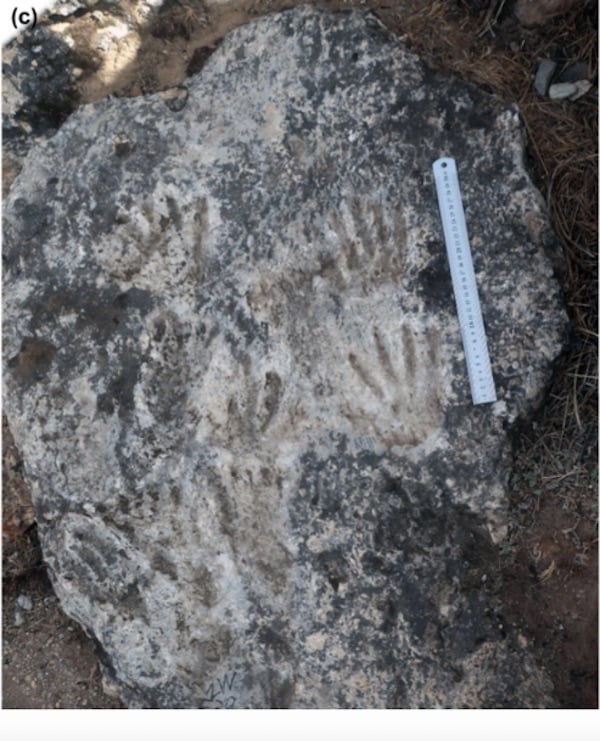
A team of international scientists has uncovered ancient hand and foot prints that may upend our understanding of early cave art.
The experts believe that the impressions identified near Quesang village in the Tibetan Plateau are between 169,000 and 226,000 years old. That would make them, by far, the earliest known examples of parietal art (more commonly known as “cave art”). What’s more, they say, these works were created by children.
The discovery, published this month in Science Bulletin, was made by a group including David D. Zhang from Guangzhou University and Matthew Bennett of Bournemouth University. They write that the hand and foot impressions “appear to have been intentionally placed on the surface of a unit of soft travertine.”
A map showing the location on the cave on the Tibetan Plateau and a photo of the prehistoric artworks between 169,000 and 226,000 years old. Photo courtesy of David D.Zhang.
The travertine was deposited by water from a now-inactive hot spring; as the travertine lithified, or transformed into stone, it preserved the traces of small hand and foot prints.
Based on the size of the traces, the scientists believe that two individuals were involved and that they were likely children. “We interpret this event as a deliberate artistic act that created a work of parietal art,” the paper states.
Prior to the recent discovery, the oldest known examples of hands used as stencils in cave paintings, according to the authors, date to around 40,000 years ago. (Those examples are located in Indonesia and Spain.) The recent find is 180,000 years older than that.
How is it possible to determine whether these tracks are actually art? The paper argues that because the traces were not made during normal movement or to stabilize motion (as has been the case with other earlier imprints), and because “care appears to have been taken with the composition,” they qualify as “an early act of parietal art.” (The authors add, with a note of caution, that “what constitutes art is a subject of considerable debate.”)
“The prints would not be simply byproducts of some other activity such as jumping or running,” Cornell University archaeologist Thomas Urban, who was part of the research team, emphasized to NBC. “They are a primary product—the printmaker was making the prints intentionally.”
If one buys that the prints are art, the discovery represents the “earliest known example of parietal art” and “adds to the body of research that identifies children as some of the earliest artists within the genus Homo,” according to the paper.